Right at the dawn of the revolutions in digital sampling and digital synthesis, Ensoniq seemed to emerge out of nowhere in the early '80s with technology that bested their competition.
The secret? An ultra powerful microchip—the "Q" chip—developed by Ensoniq's founders, a group of engineers that left Commodore Business Machines to launch their own company.
The Q chip powered its breakthrough debut, the Mirage DSK-8 sampler, along with its ESQ-1 synth and its Ensoniq Piano (a sampled grand piano). And the technology served as the bedrock for future breakthroughs. By the early 2000s, the original company had been sold and merged with former competitors E-Mu, though this new combined company did not last for long.
Keep scrolling to see highlights from Ensoniq's history. For more about the company and the impact of its samplers, read our feature, "When Ensoniq Brought Samplers to the Masses: The Mirage, EPS, and ASR-10."

Ensoniq's very first release, the Mirage DSK-8 was one of the world's first affordable samplers, available for a fraction of the price of a Fairlight CMI or even an E-Mu Emulator. Followed by the Mirage DMS-8 rack module in 1985 and the Mirage DSK-1 keyboard in 1986.
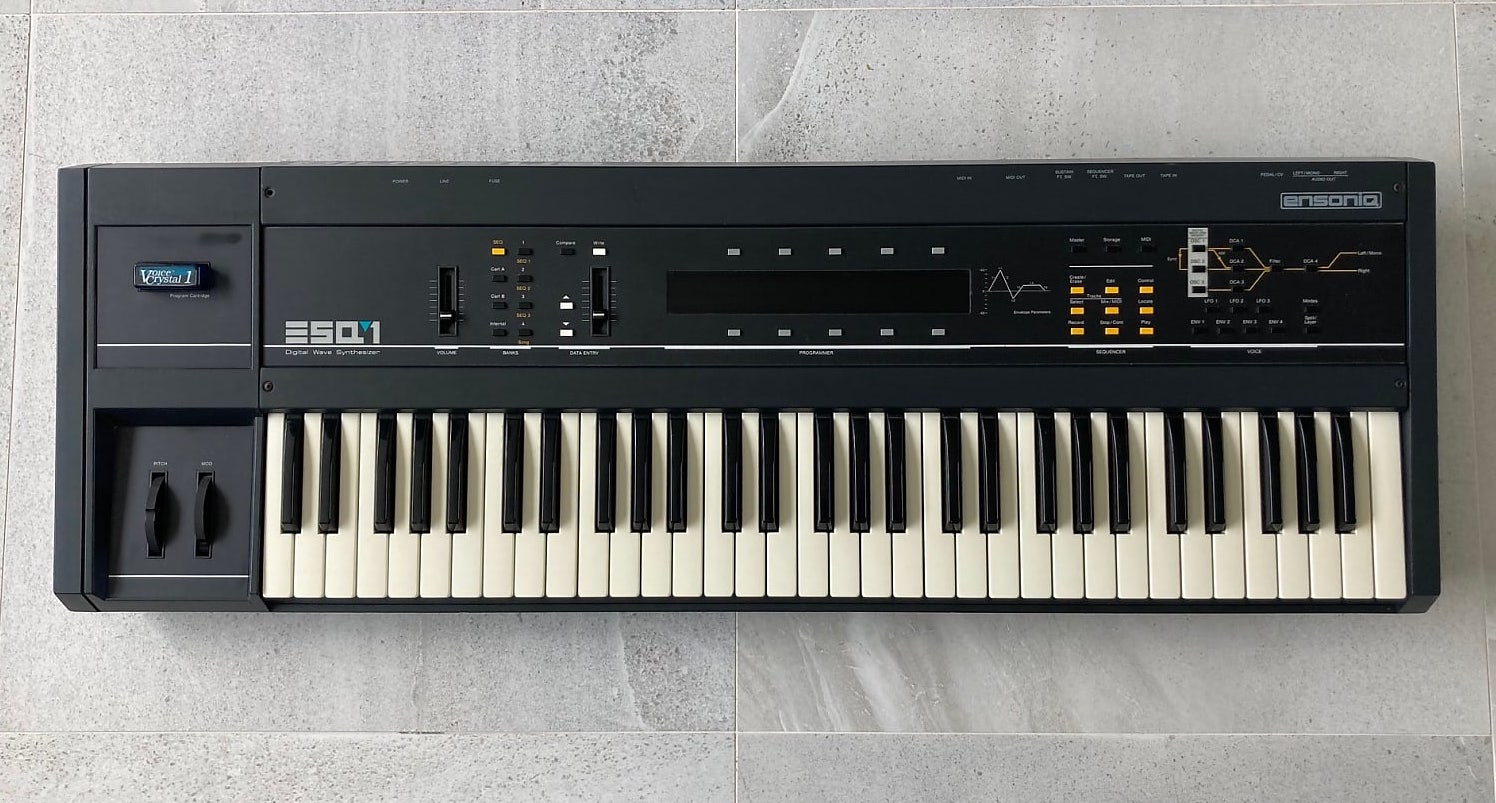
An early workstation, if limited by today's standards, the strength of the ESQ-1's built-in sequencer made people at the time ask, "Is this a synth with a sequencer, or a sequencer with a synth?" With eight voices, each built on three digital oscillators, the ESQ-1 offers 32 different waveforms to play with (some sampled, some synthesized). Available as a module as the ESQ-M from 1986–88. The updated SQ-80 arrived in 1987.
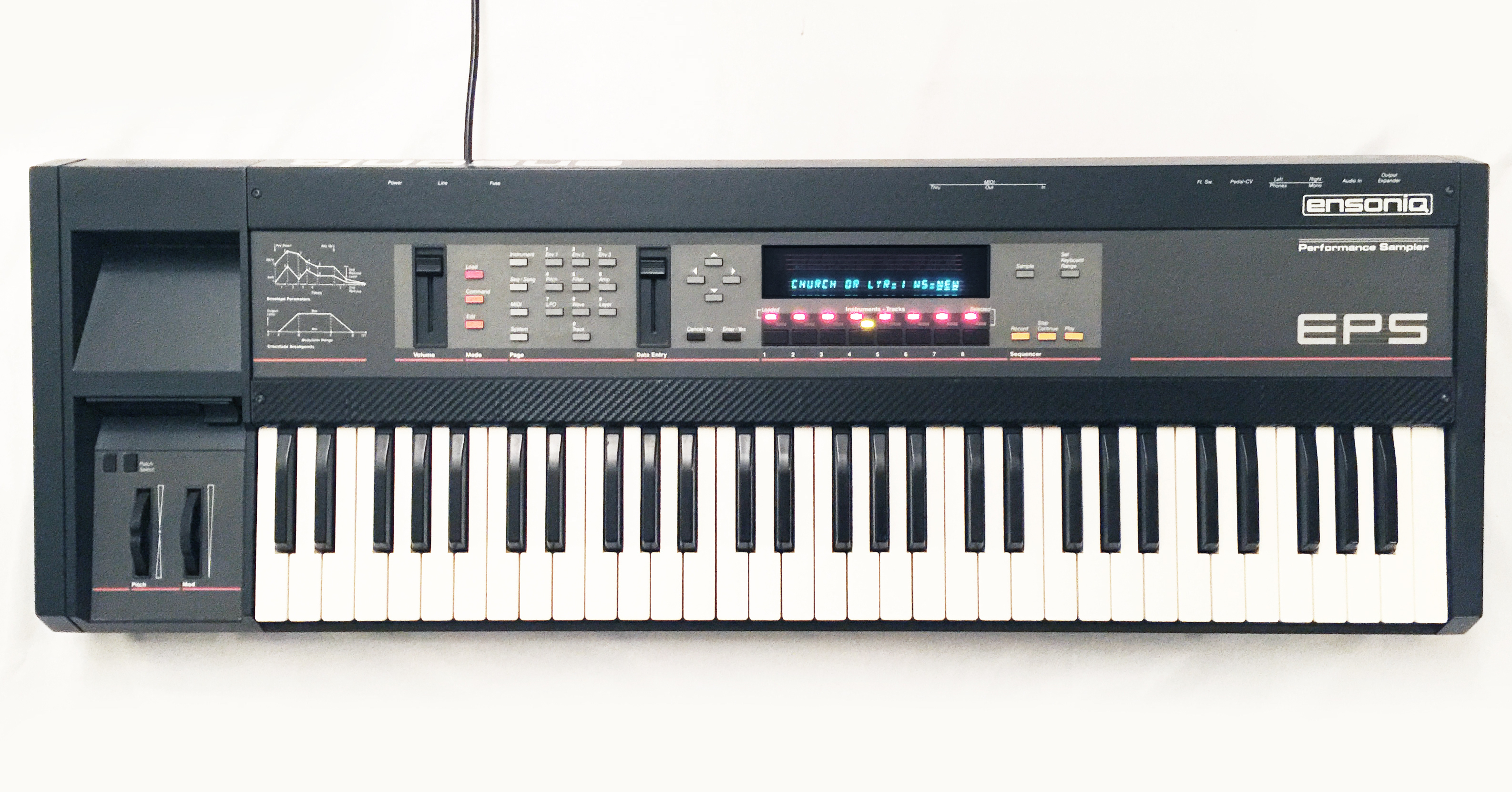
The Electronic Performance Sampler (EPS), first released in '88, is a few steps up from '84's Mirage DSK-8: 13-bit vs. 8-bit, five seconds of sampling time vs. two seconds, a larger sample rate range, and the inclusion of an ESQ-1-style sequencer. It didn't make the same revolutionary splash as the Mirage, but, in addition to being more powerful, it's known for being easier to use too. Available as the EPS-M rack module unit (with four times the onboard memory). Later upgraded to the 16-bit EPS 16+ in 1990.
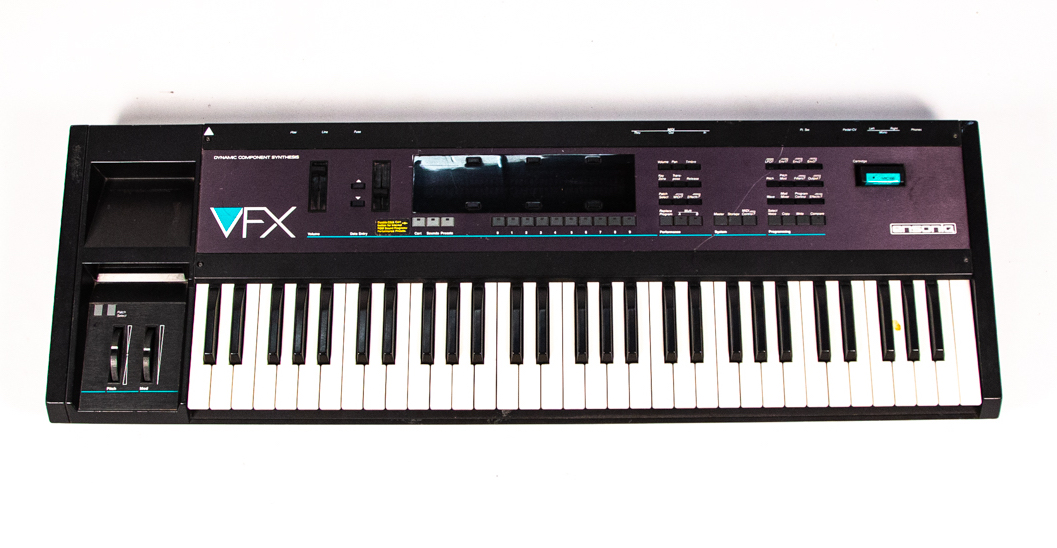
Having dropped the onboard sequencer found on earlier designs, the VFX is a proper wavetable synthesizer. Ensoniq called its particular take on wavetable "transwave synthesis." The VFX includes stereo onboard effects like reverb, delay, chorus, rotary, and more. The VFX SD adds a powerful 24-track sequencer and an SD drive, while 1990's VFX-like SD-1 adds other upgrades.
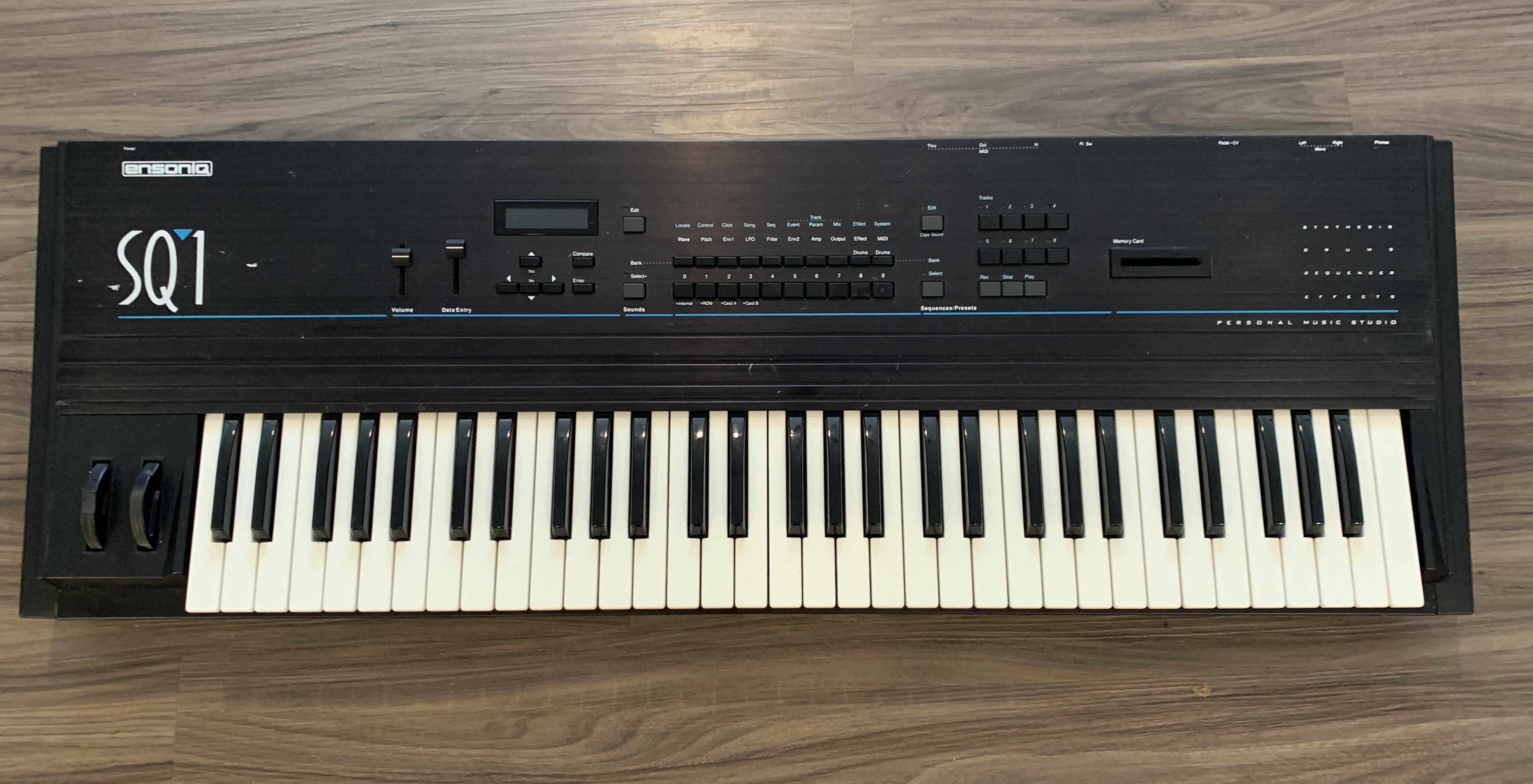
Not to be confused with the earlier ESQ-1 (or, for that matter, the SQ-80), the SQ-1 is actually closer to the VFX SD in design. However, Ensoniq stripped down many of the VFX SD's features to make the SQ-1 more affordable upon release. So it's a 16-track sequencer instead of 24, slightly fewer waveforms to choose from, and less memory overall.
However, the SQ-1 had many variants over the next several years: the rackmounted SQ-R (1990), SQ-R Plus ('91), SQ-1 Plus ('91), SQ-2 (1991), and 32-voice versions of each (all released in '92).
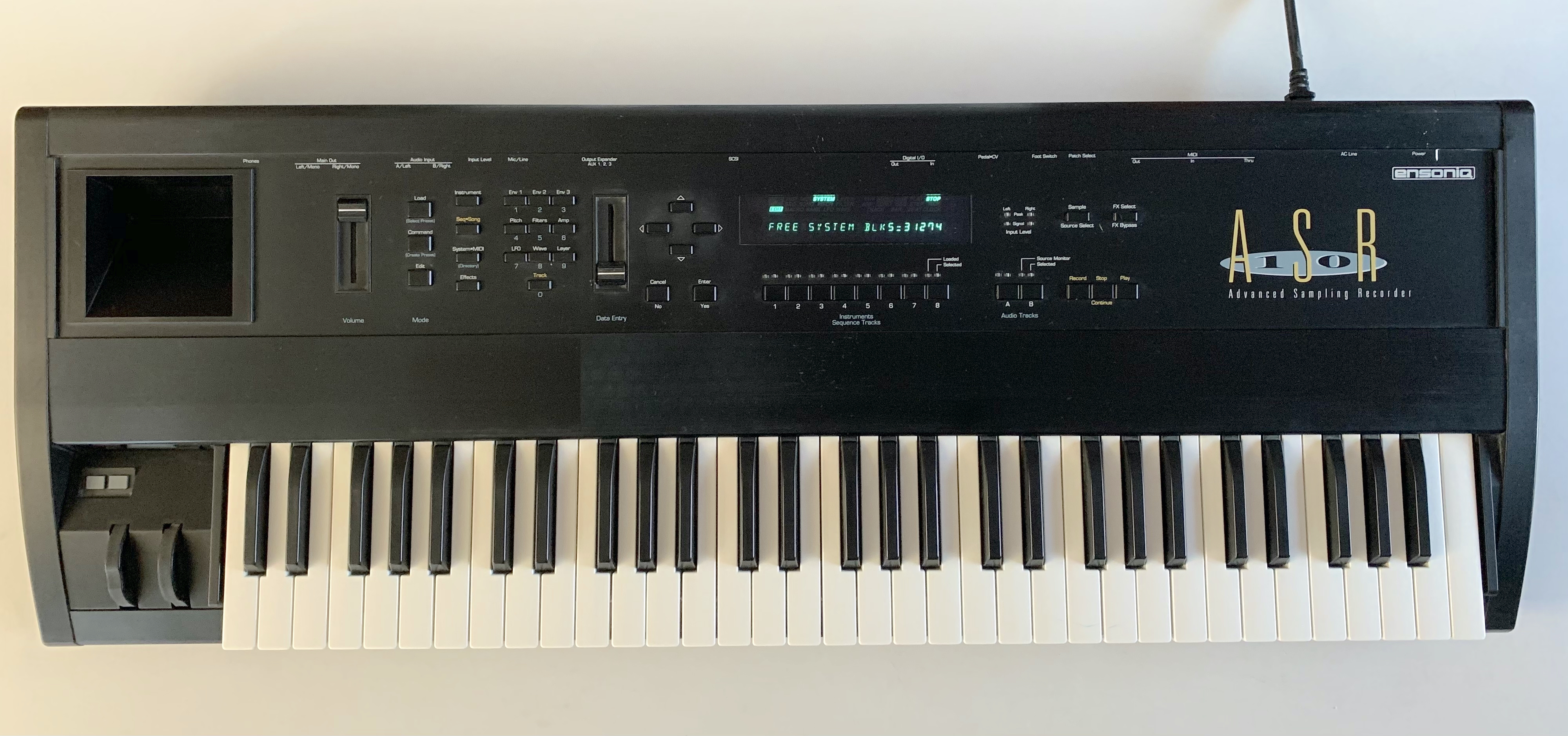
A legend all its own, the ASR-10 remains a popular sampling workstation for some hip-hop and dance music producers. With CD-quality sample rates, the ASR-10 combined Ensoniq's leading sampling prowess with its impressive synth architecture, becoming a classic of the era alongside Akai MPCs. Also available as the ASR-10 Rack.
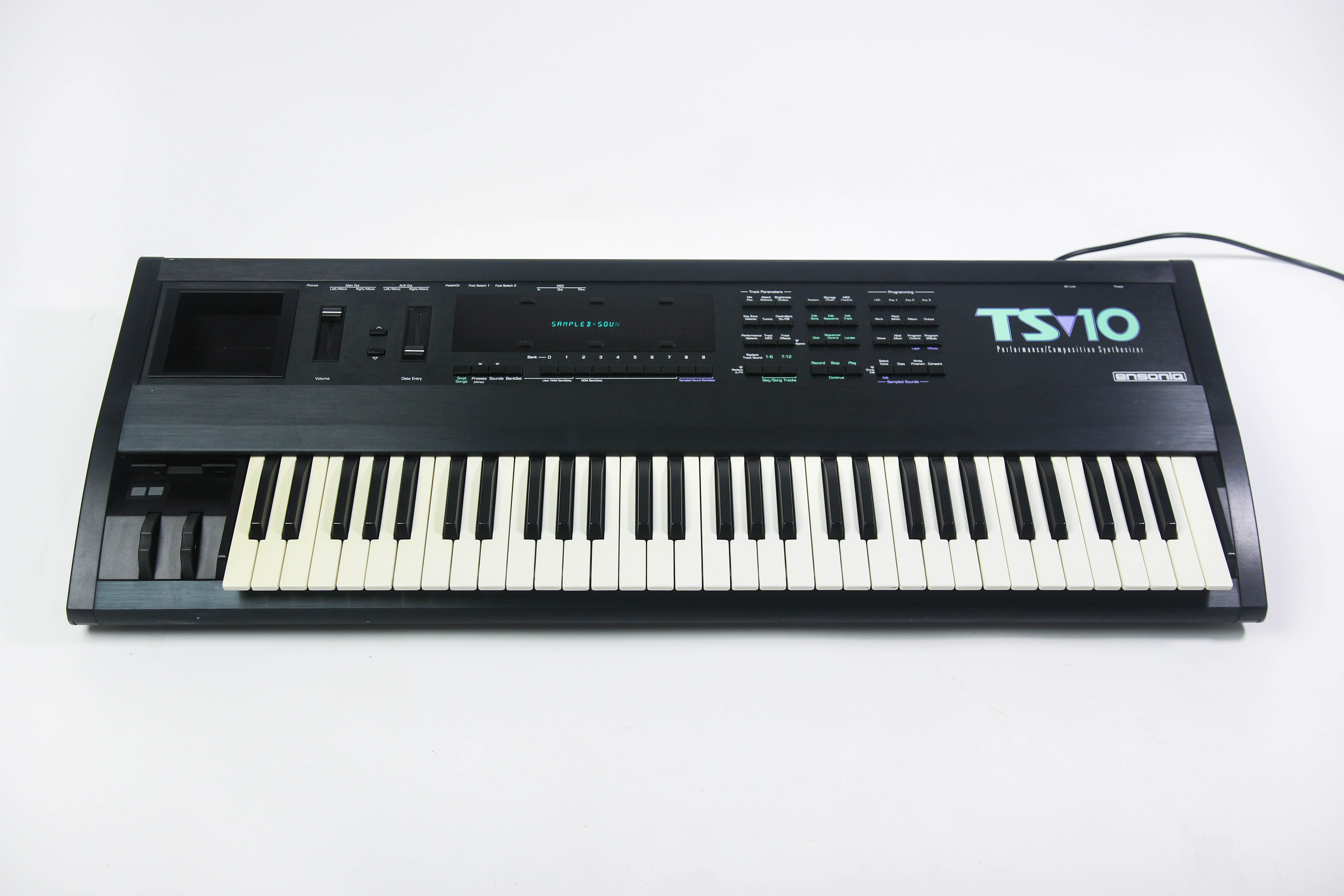
The TS-10 picks up where the VFX/SD series left off, and, to many, it represents the apex of that particular line of Ensoniq's synthesizer workstations. The TS-10 Plus soon followed, while the TS-12 is the same synth with a larger, 76-key keyboard.
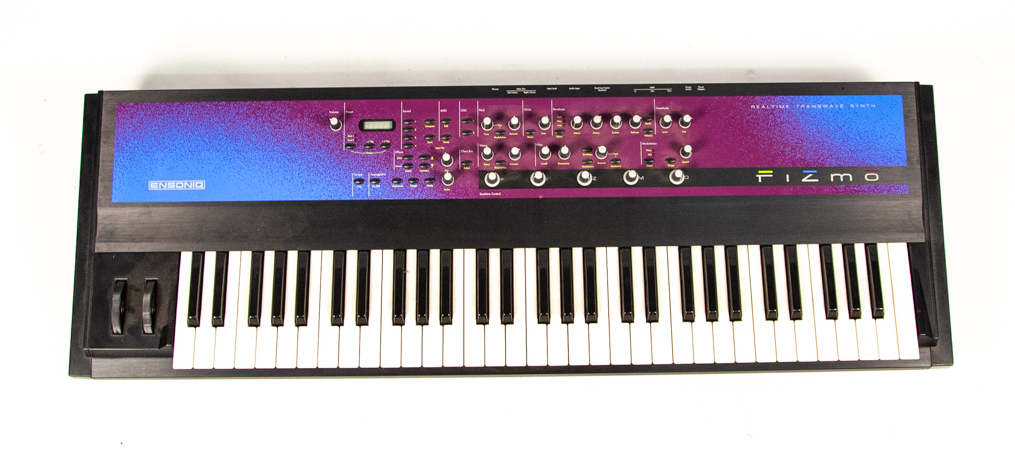
Ensoniq's last hurrah, the Fizmo takes the company's unique transwave version of wavetable synthesis to its limits. Offering unprecedented control over each piece of a wave, the Fizmo is meant for sound designers and players who demand the most of their tone-shaping tools. Many at the time of its release found it to be too complicated for its own good, but it has a small, dedicated cult following to this day. Also available as the Fizmo Rack.
